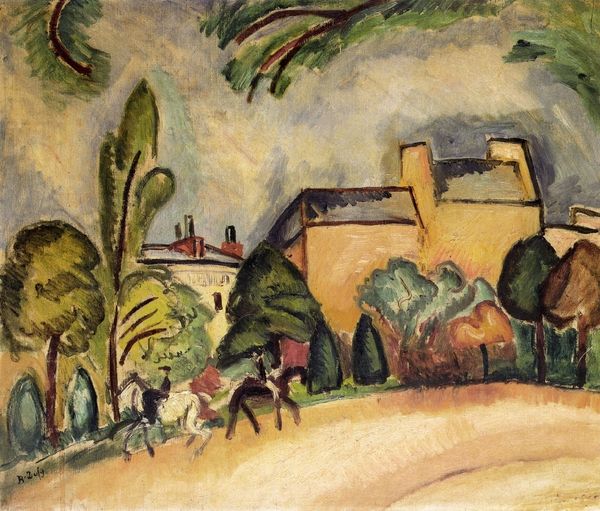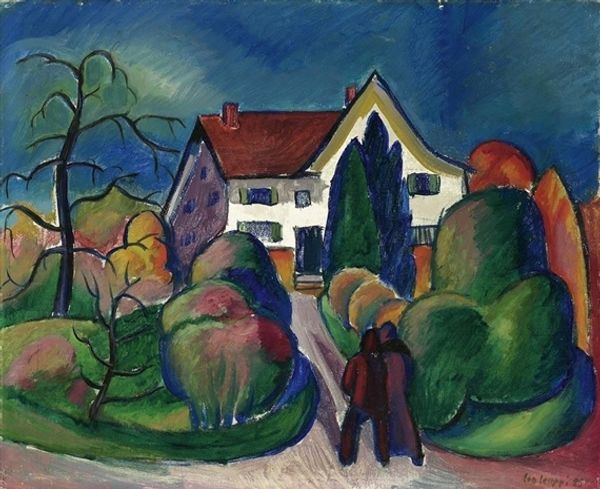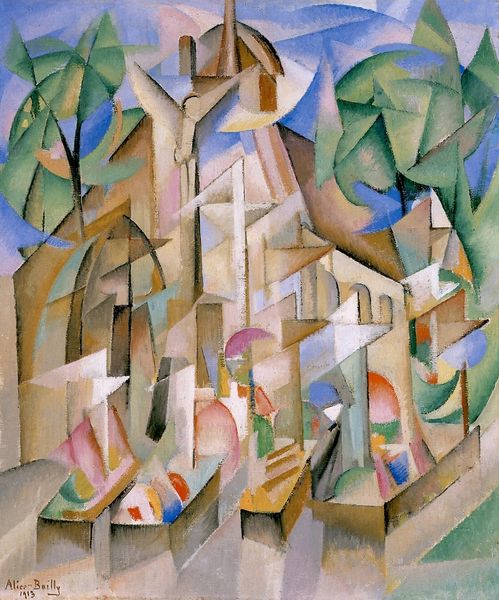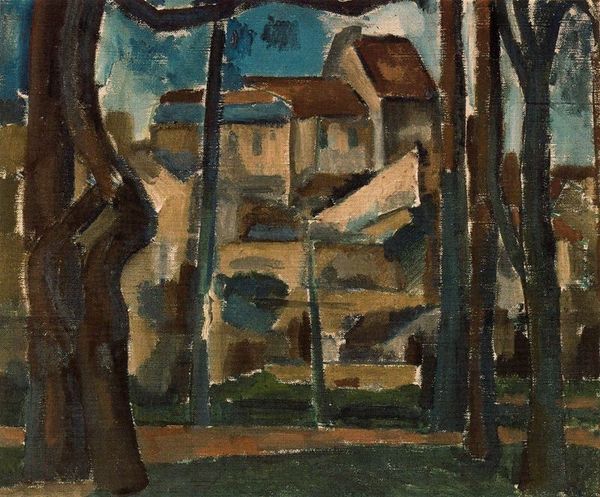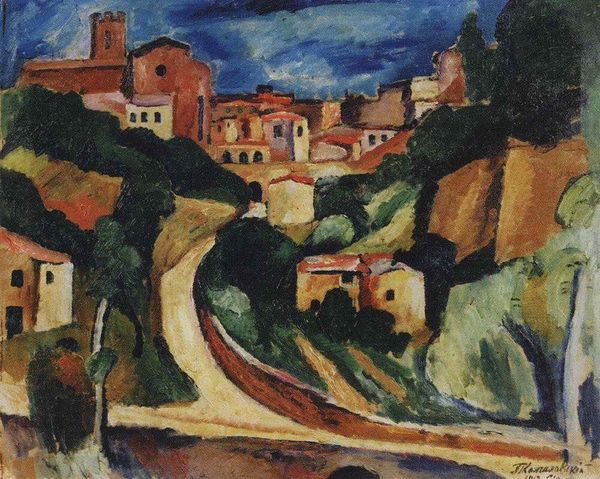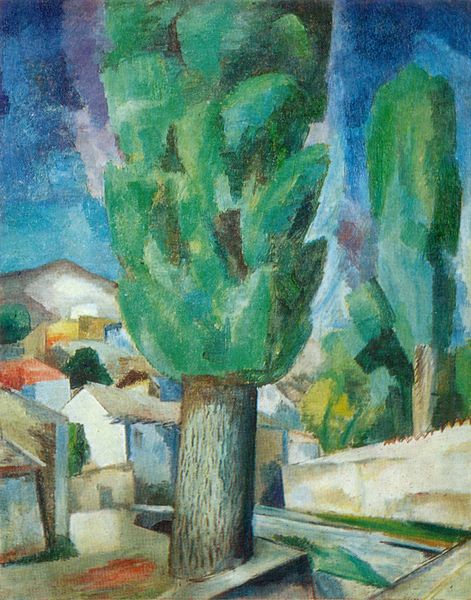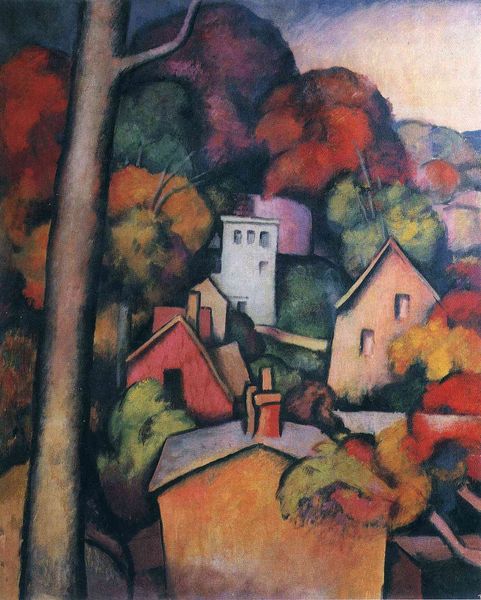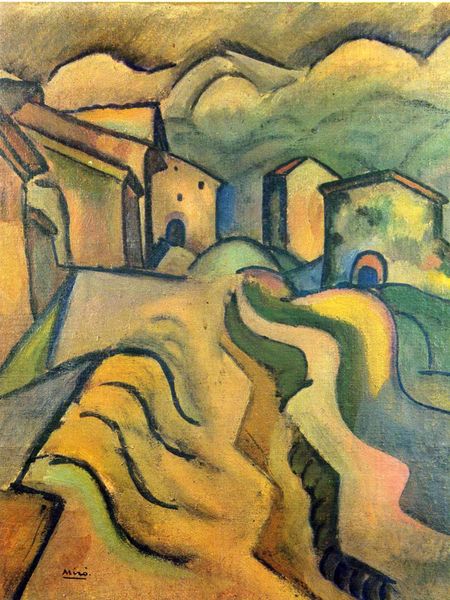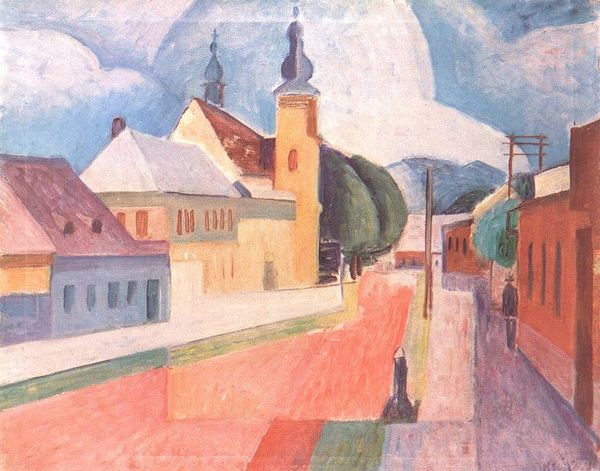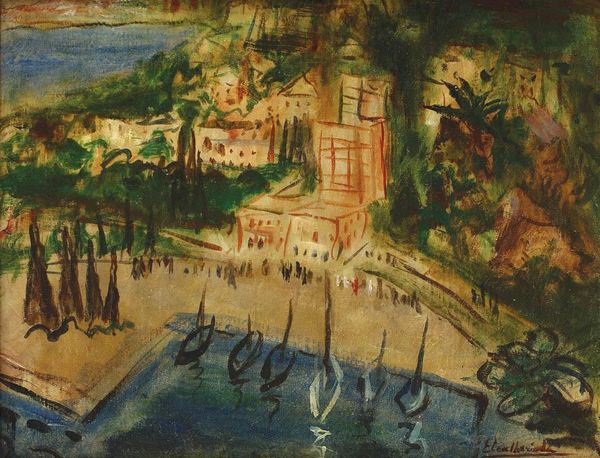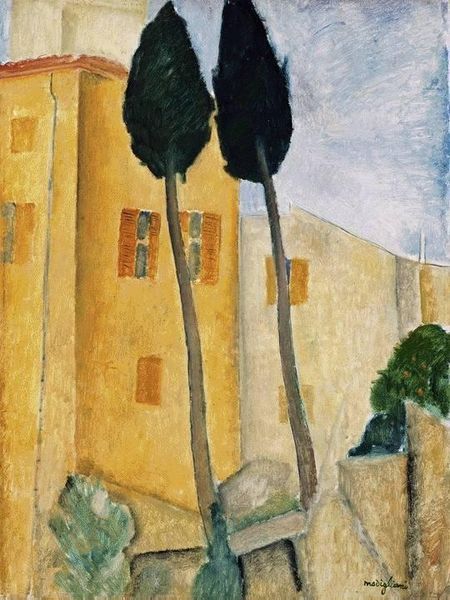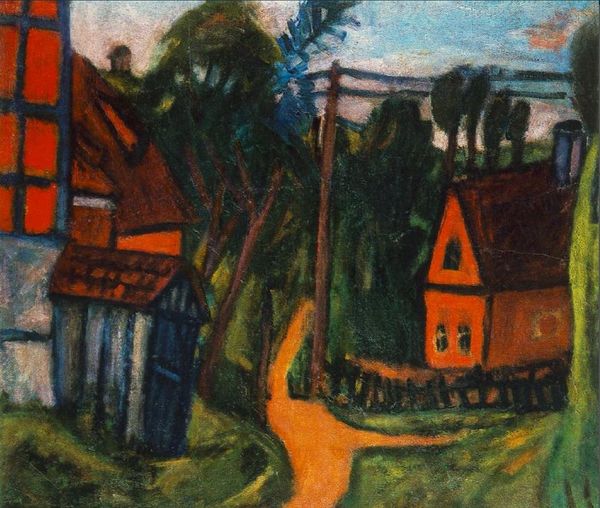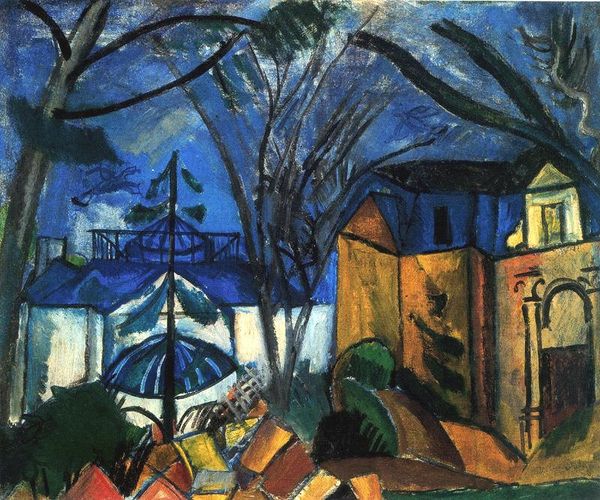
Copyright: Kmetty János,Fair Use
Curator: This is János Kmetty’s 1932 oil painting, "Nagybanya Sketch with a Walking Figure". Editor: The hazy light immediately struck me. There's an undeniable sense of stillness, almost as if the air itself is holding its breath. The woman’s back, the geometry, and the colors, though muted, lend it a palpable serenity. Curator: Kmetty was a key figure of the Nagybanya artist's colony, known for plein-air painting, or working outdoors. The appeal, I think, lies in the direct engagement with labor and landscape, capturing the effects of light and atmosphere first hand and transforming the city into something new. The artwork becomes a visual document of their time in Nagybanya. Editor: It's more than a mere document, though. The artist isn't just replicating what's in front of them. It has something beyond representation, with vertical forms—trees and the church tower—puncturing the composition in a visually rhythmic way. Also note the relationship among building, trees and the person. This combination guides our eyes through an enclosed, well structured picture space. Curator: Of course, the way that he and others developed and shared their skills—it all depended on accessibility and economics. You know, affordable materials, travel routes, supportive patrons... it created space for unique practices. Editor: Yes, and the way those materials—oil paints specifically—are manipulated, thinly applied, almost translucent in areas, giving the buildings an airy feel while allowing the canvas texture to subtly show through. It is just a great synthesis among color, plane and brushstroke. Curator: It's fascinating how artists use that interplay of material availability, labor conditions and those immediate techniques of mark making. These constraints gave birth to new techniques. Editor: I agree; the scene, captured with sensitivity, hints at a tranquil interlude, maybe just a common experience within this artistic environment. A peaceful town. Curator: This interplay illuminates a dialogue between environment and method. Thanks to him, we gain some perspective of understanding an influential chapter in the history of Hungarian art and the life of the colony and those artists who found a supportive environment that fostered great art. Editor: Precisely; it offers a nuanced reflection on our place and perception within the modern world.
Comments
No comments
Be the first to comment and join the conversation on the ultimate creative platform.

